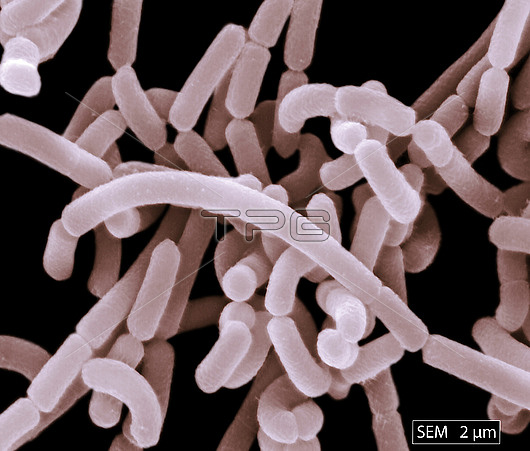
Lactobacillus acidophilus bacteria, coloured scanning electron micrograph (SEM). Gram-positive, rod prokaryote (bacterium). It ferments only lactose into lactic acid (a homofermentative microorganism). As a result of producing lactic acid this bacterium thrives in more acidic environments than most related microorganisms (pH 4-5 or lower) and grows best at 45 degrees Celsius. L. acidophilus has a surface protein layer which allows them to adhere to mucous membrane cells. It occurs naturally in the human (and animal) intestine, mouth, and vagina. The acid environment it lives in inhibits the growth of many other bacterial forms and therefore protects the vagina from pathogenic infection. L. acidophilus also produces lactase, the enzyme that breaks down milk sugar (lactose) into simple sugars. People who are lactose intolerant do not produce this enzyme. For this reason, L. acidophilus supplements may be beneficial for these individuals. It is the most commonly used probiotic and is used to produce acidophilus milk. L. acidophilus also produces bacteriocins against pathogenic food borne bacteria.
| px | px | dpi | = | cm | x | cm | = | MB |
Details
Creative#:
TOP26666117
Source:
達志影像
Authorization Type:
RM
Release Information:
須由TPG 完整授權
Model Release:
N/A
Property Release:
N/A
Right to Privacy:
No
Same folder images:

 Loading
Loading